
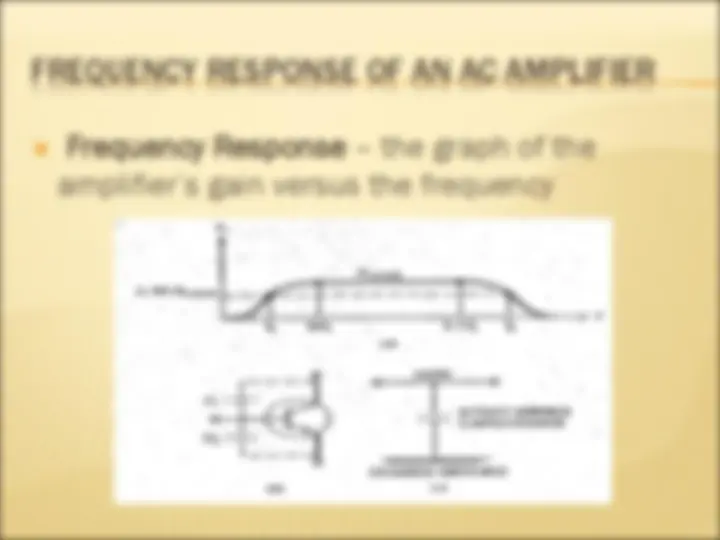
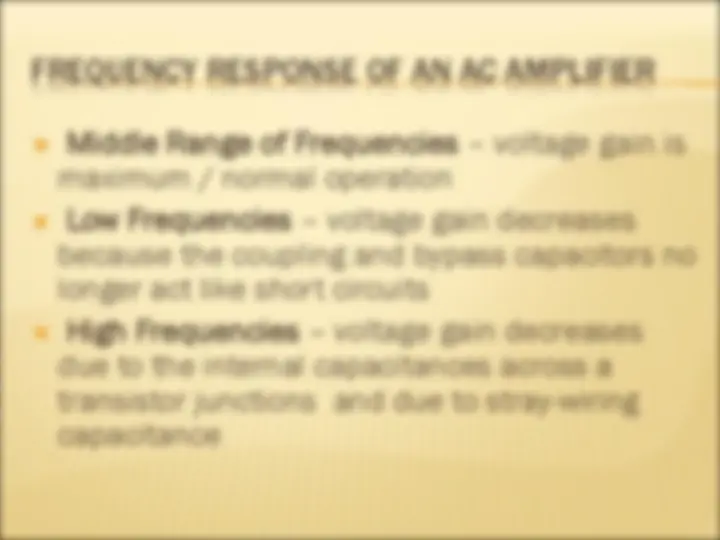

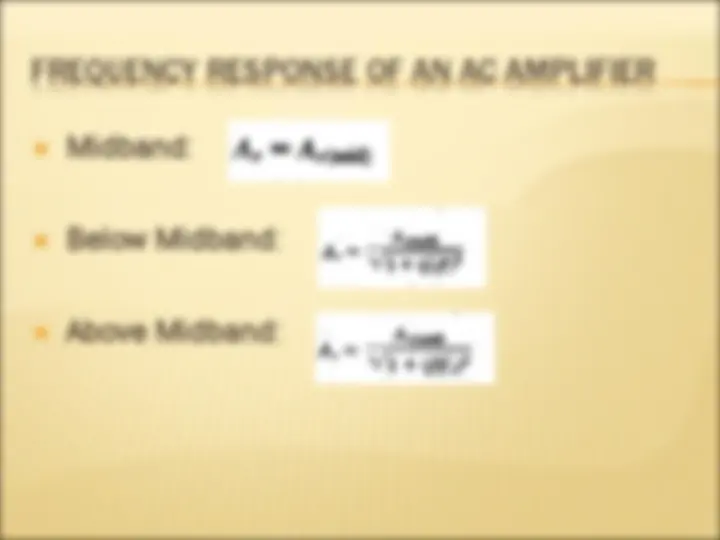
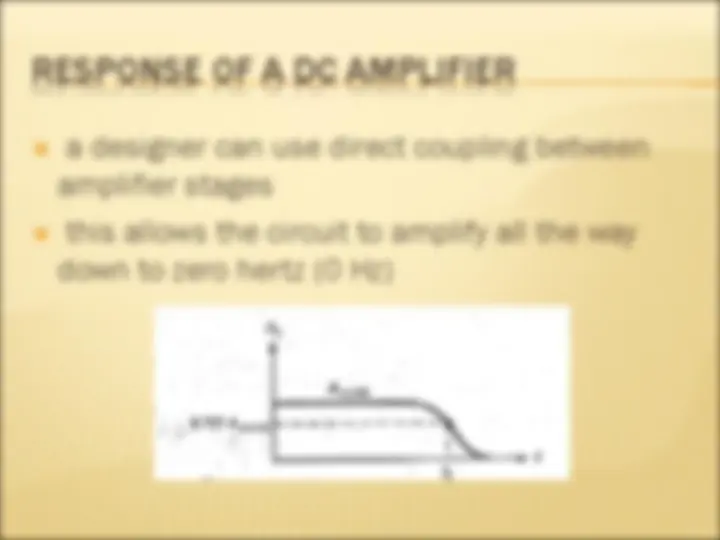
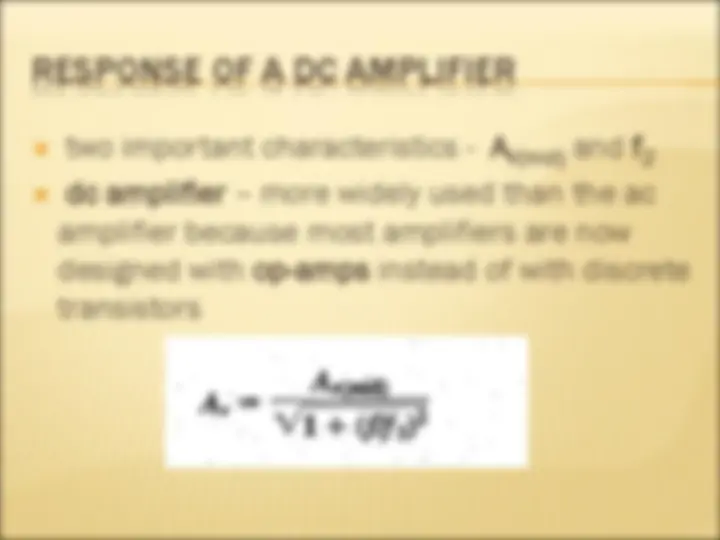
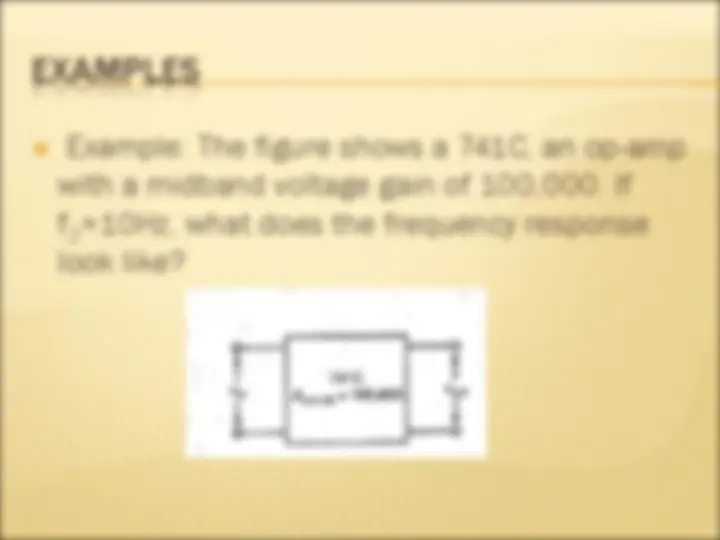
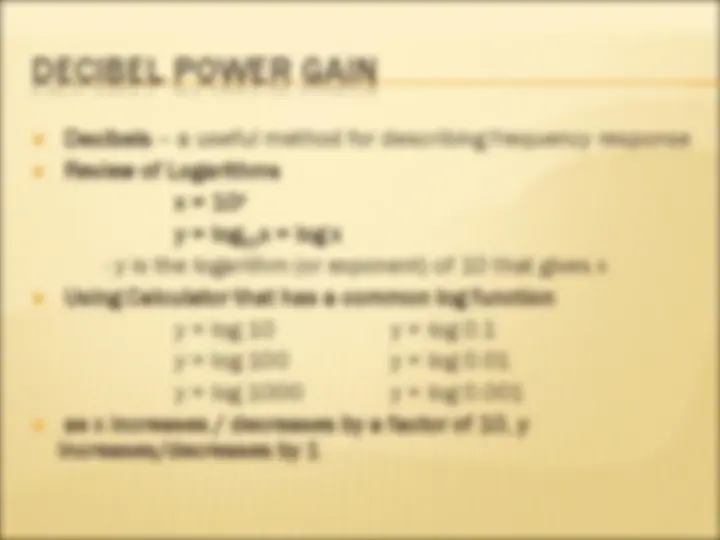
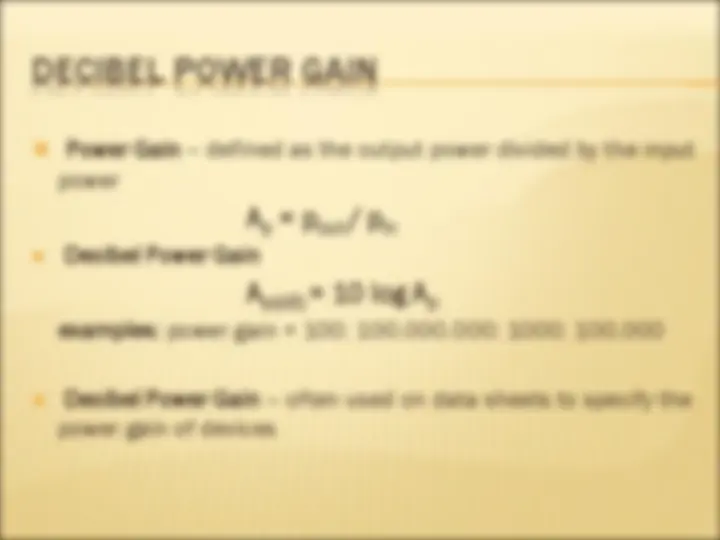
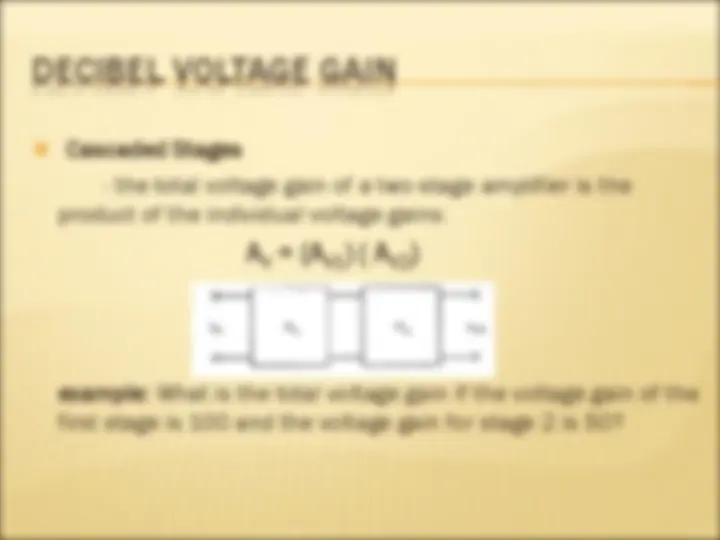
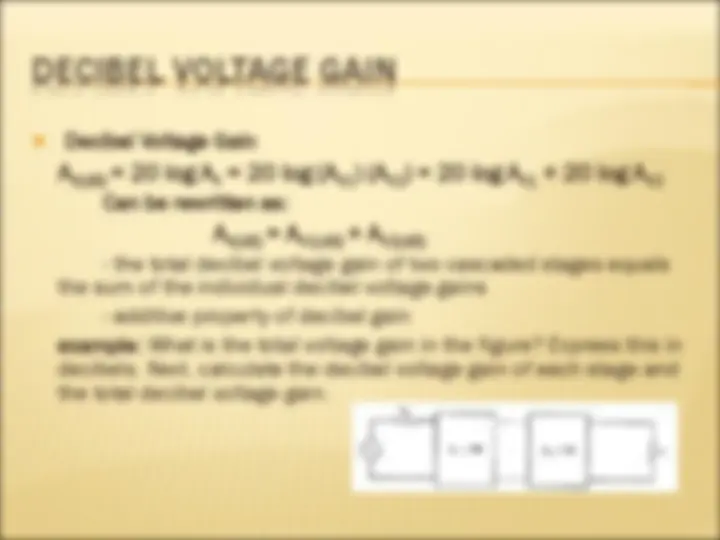
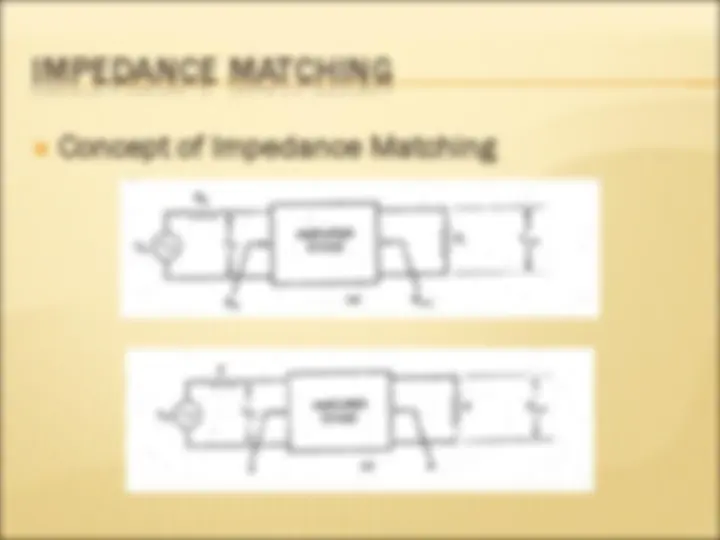

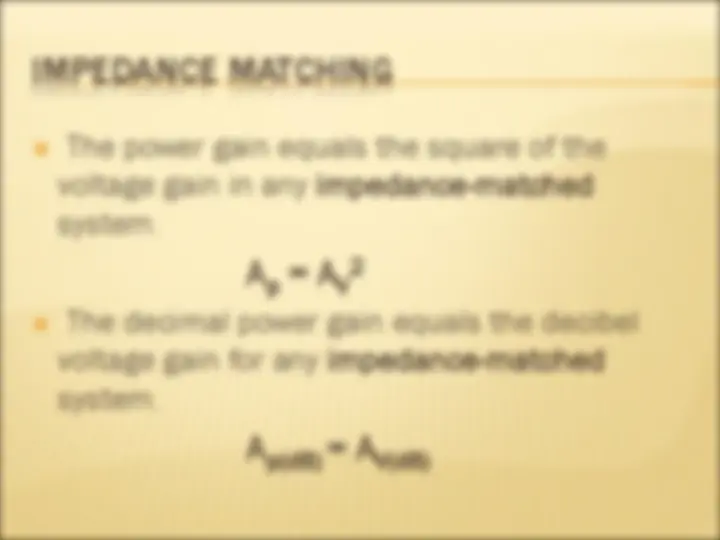
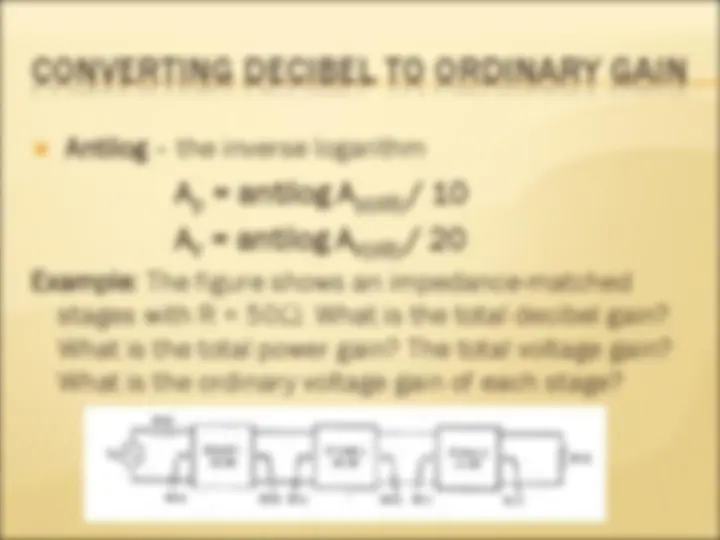
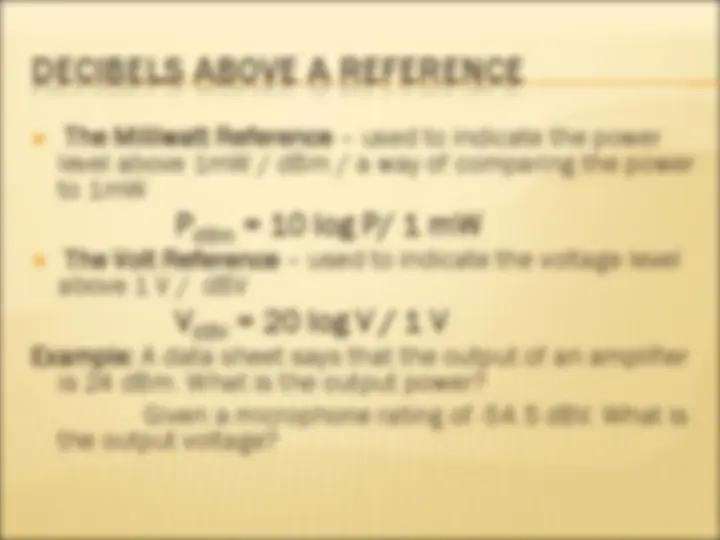
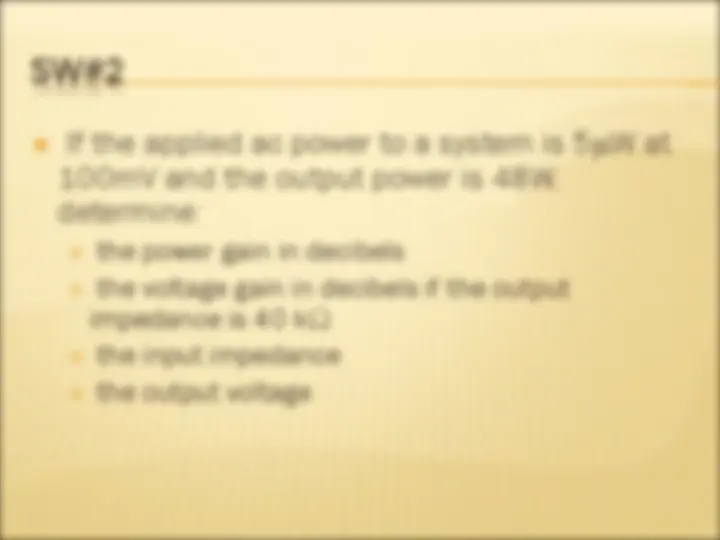
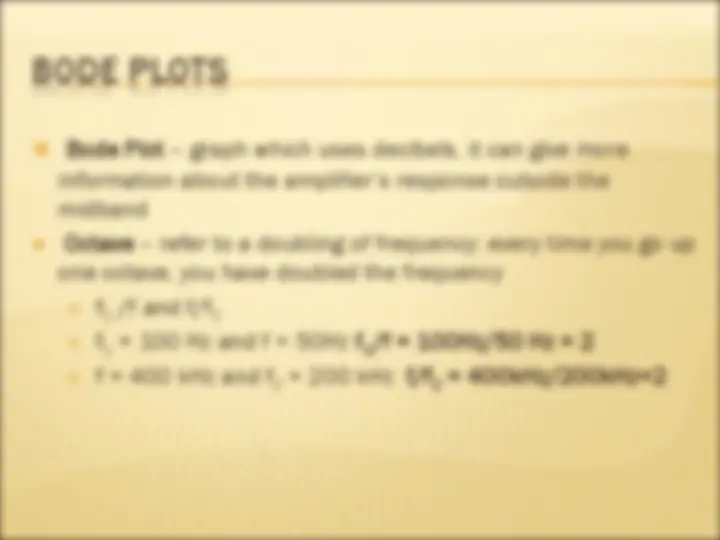
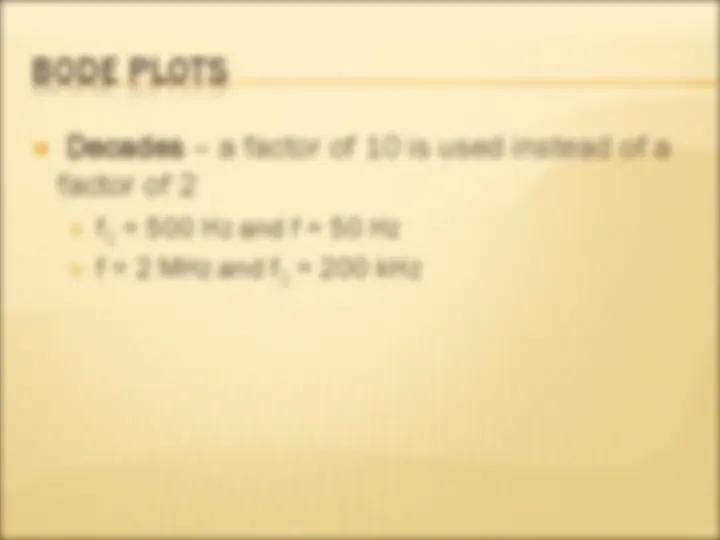
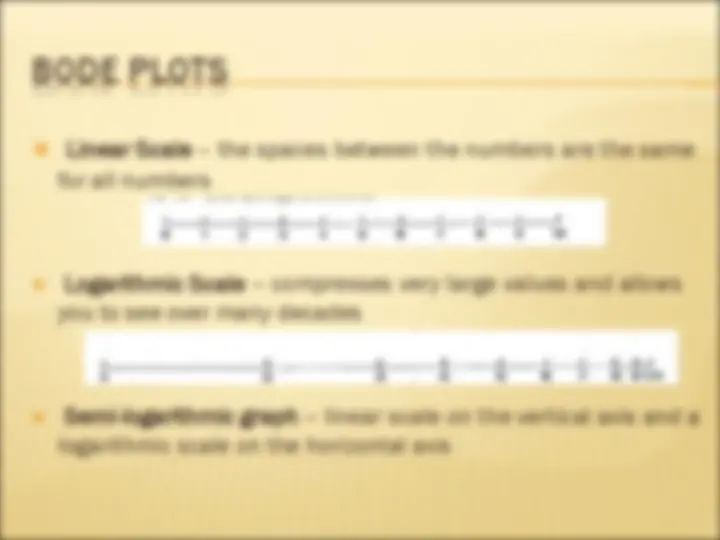
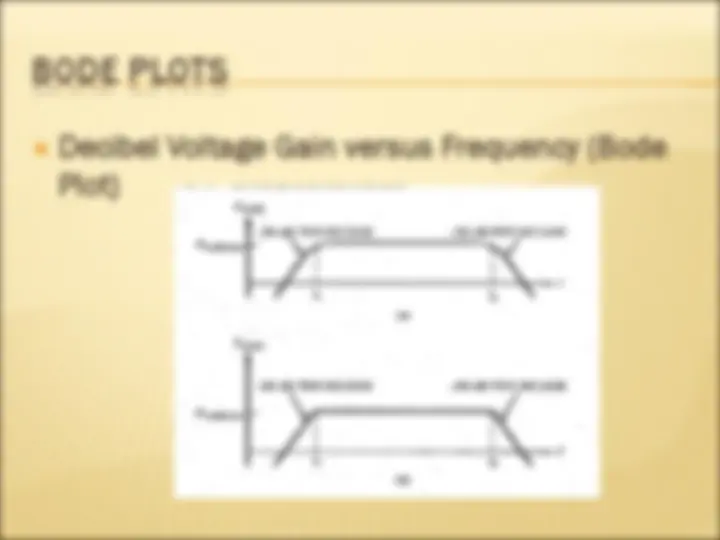
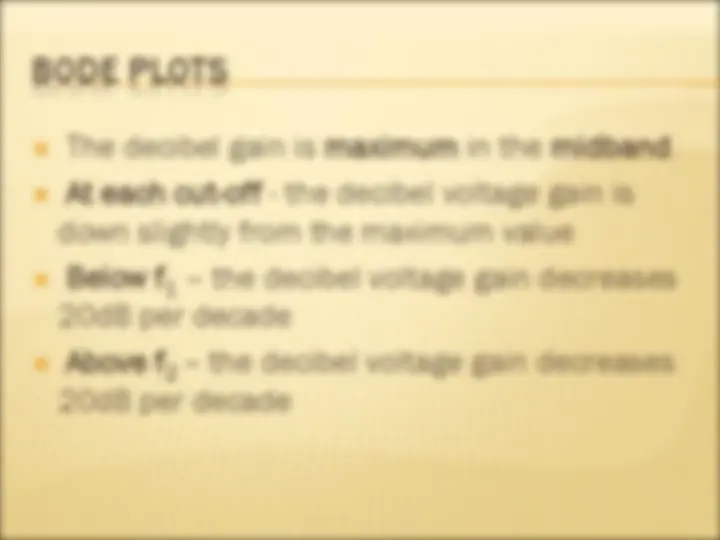
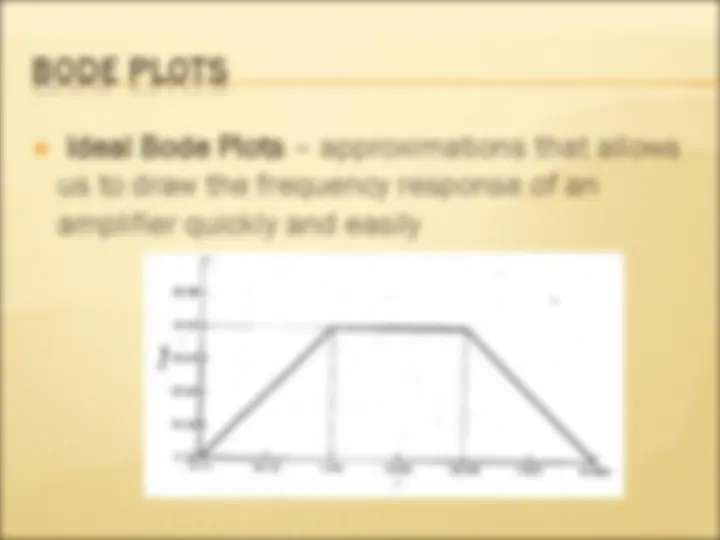
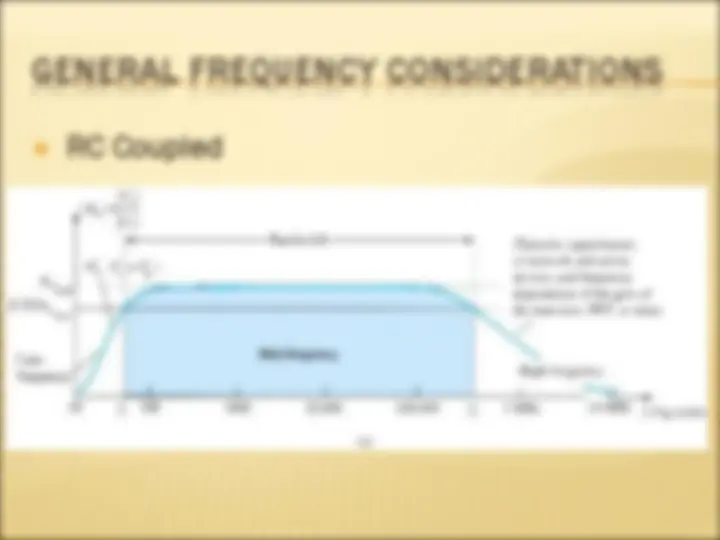
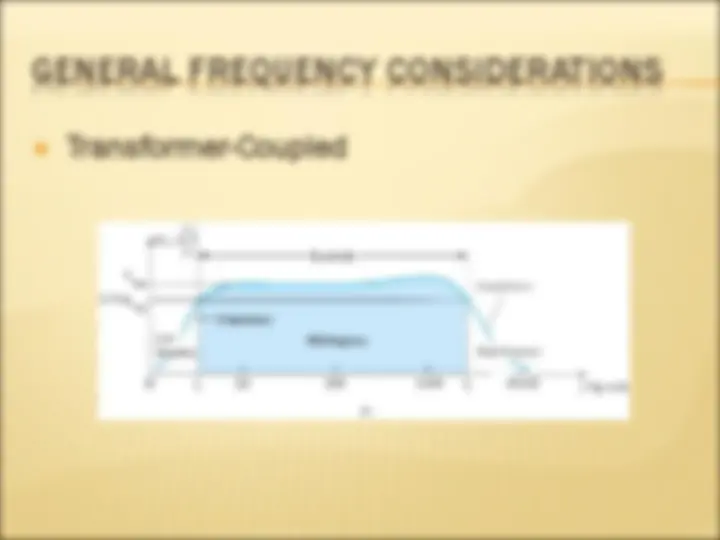
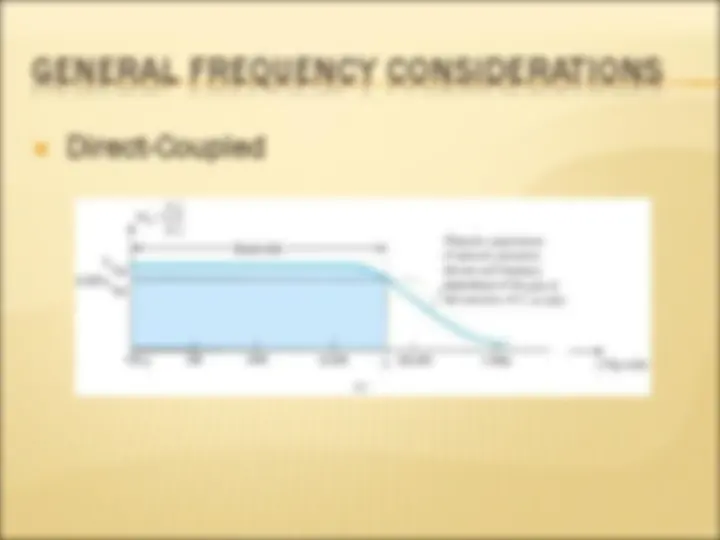
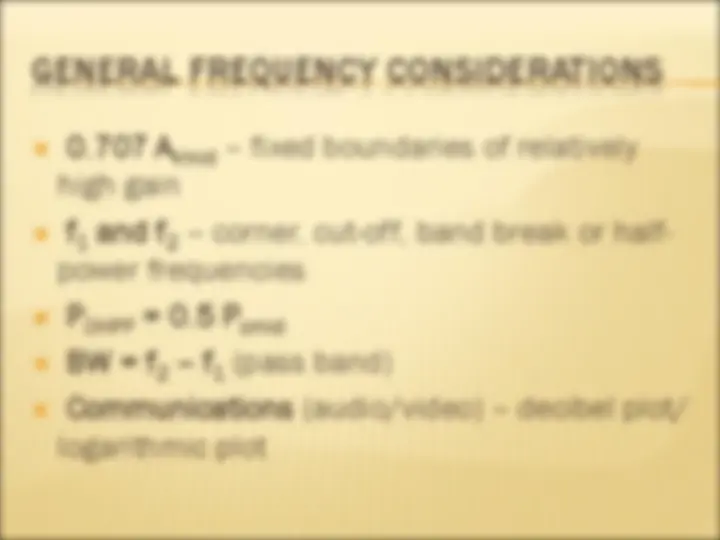
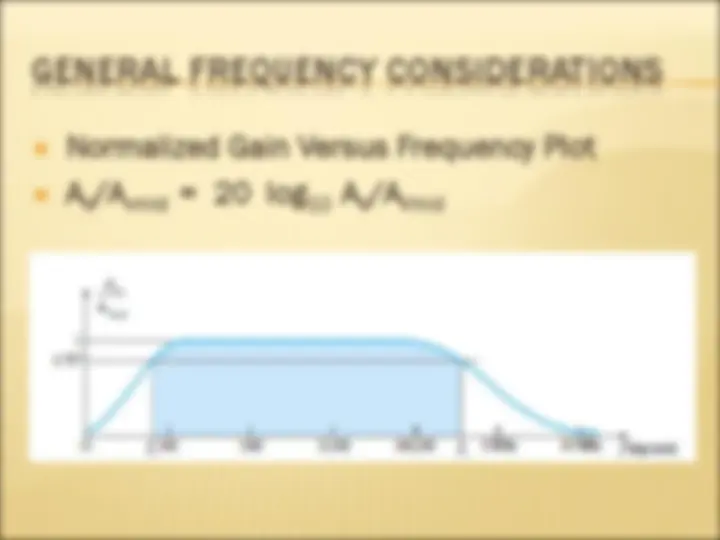
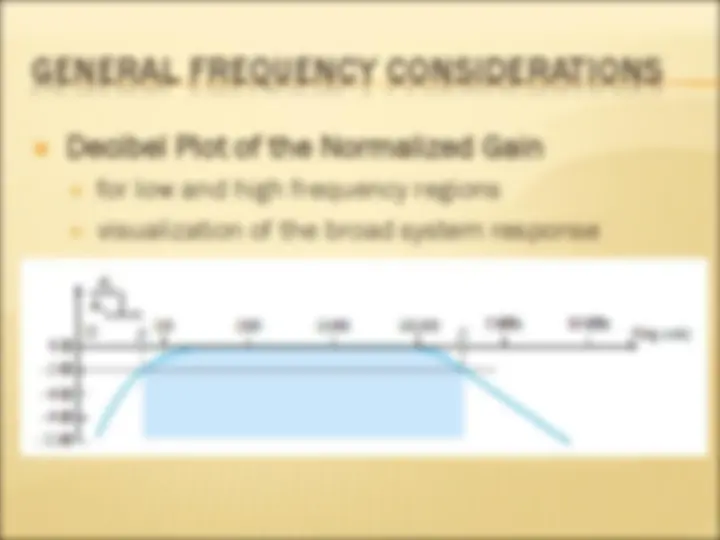
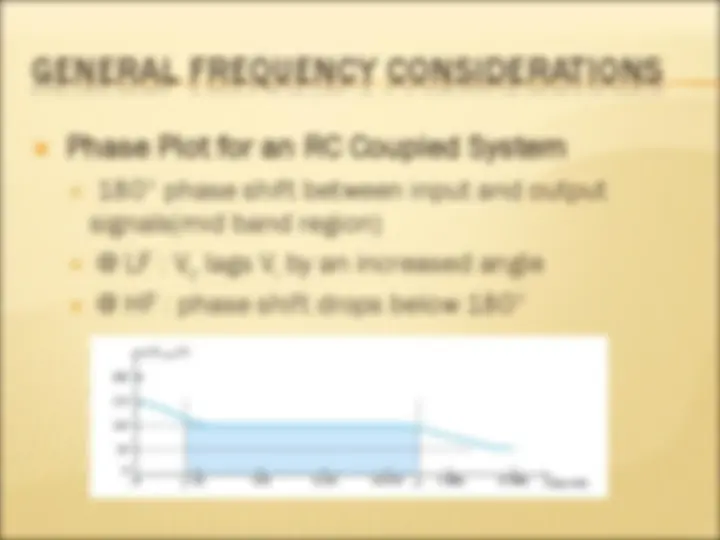
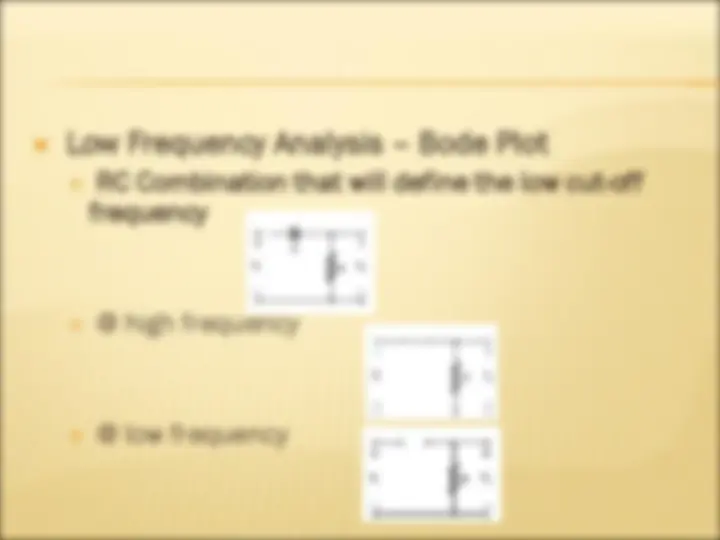
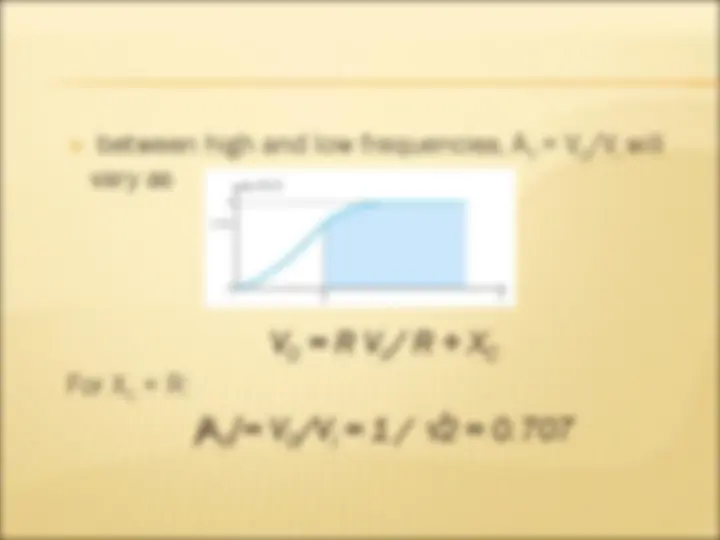
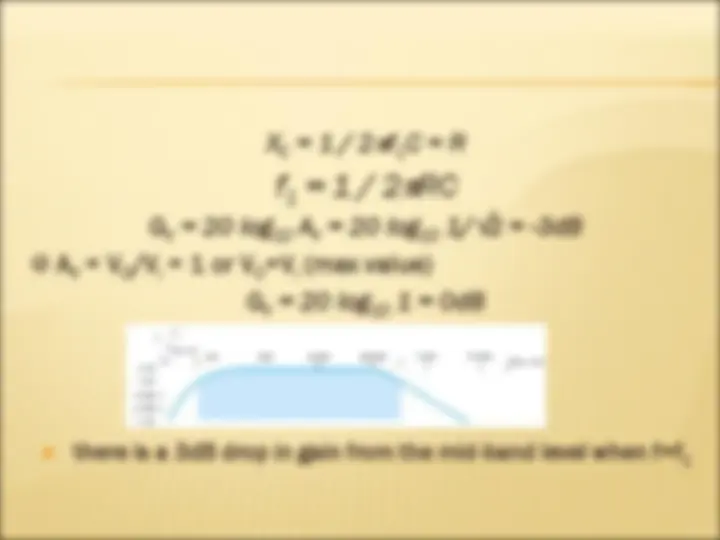

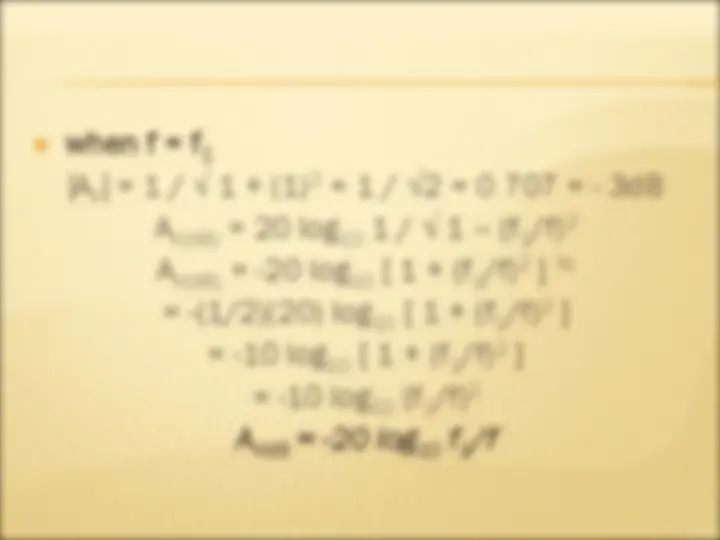
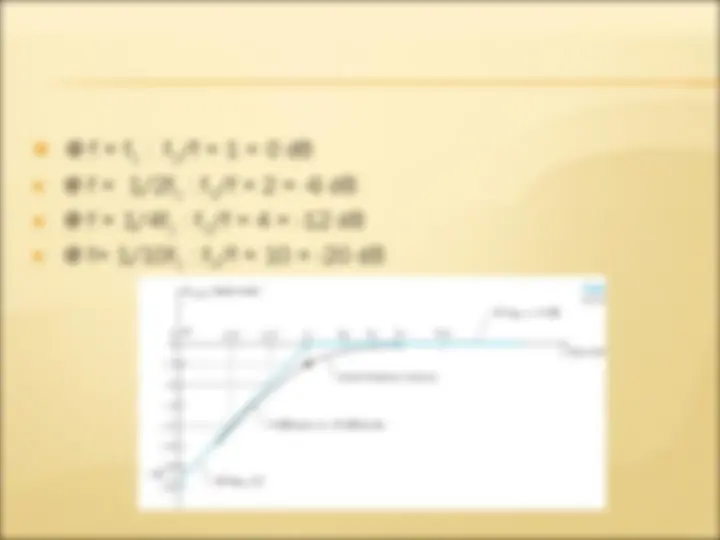
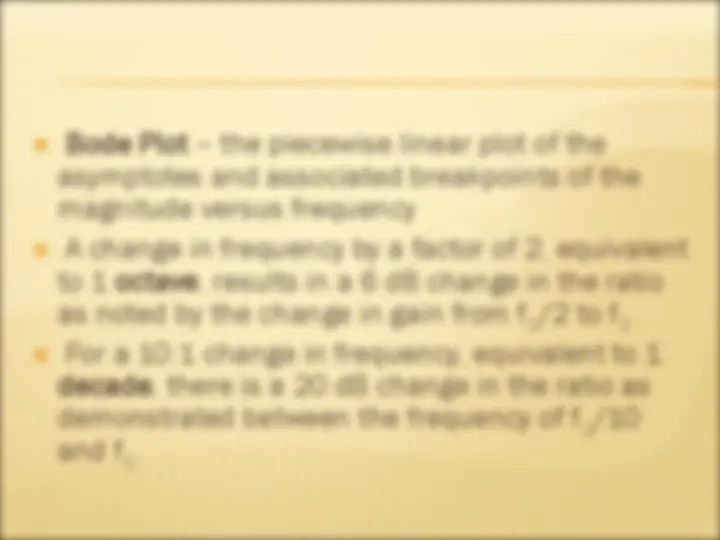

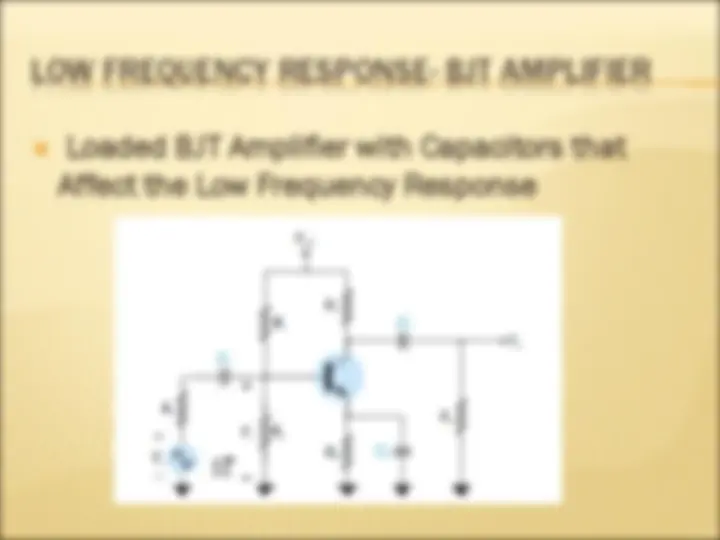
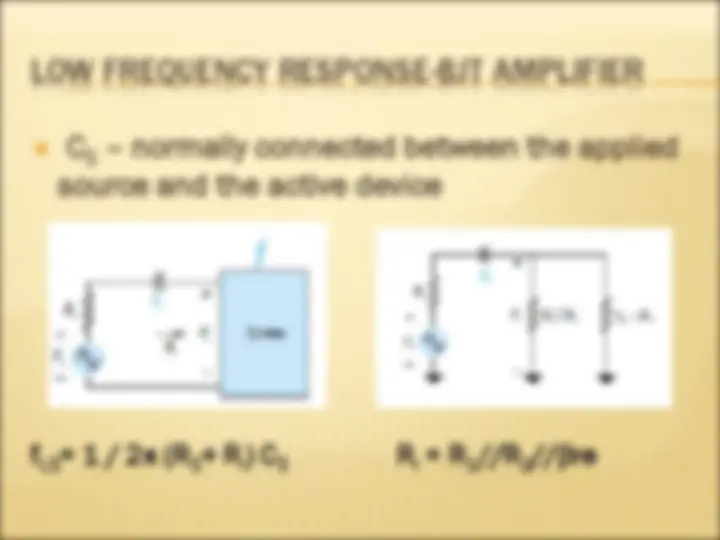
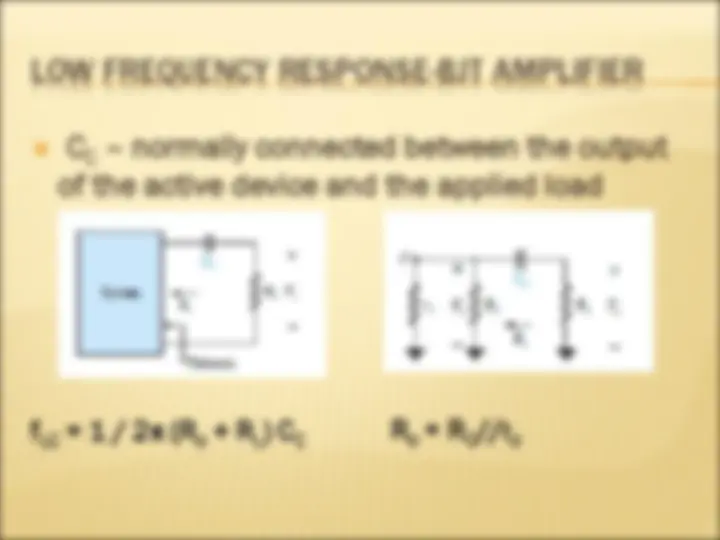
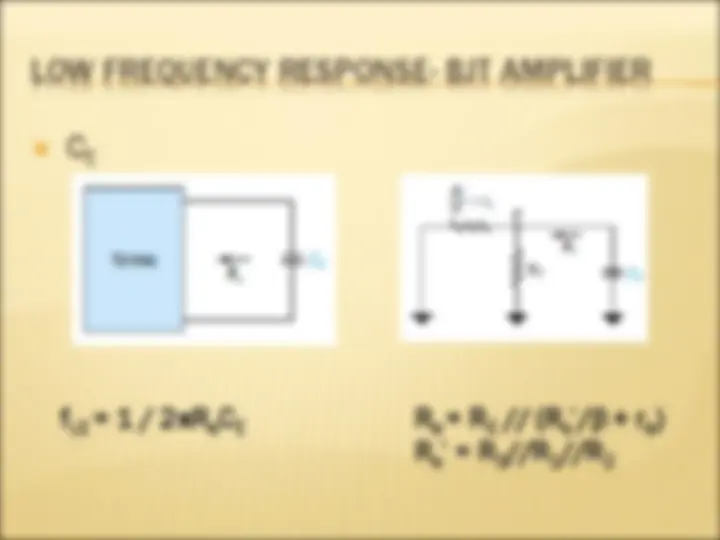
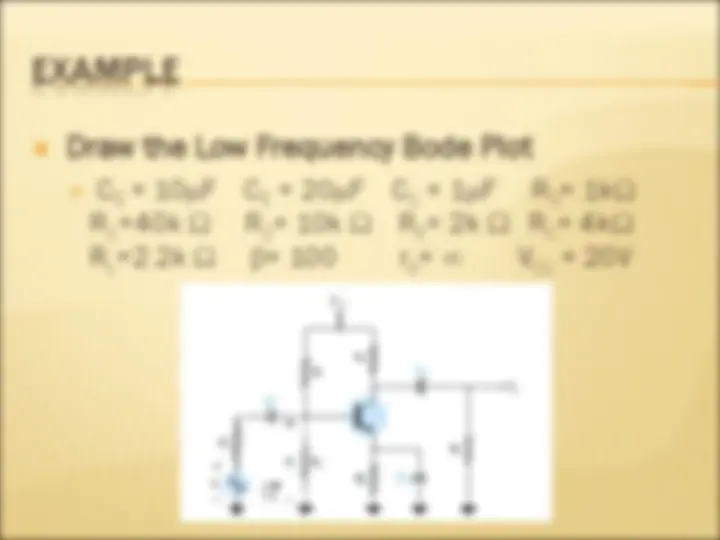
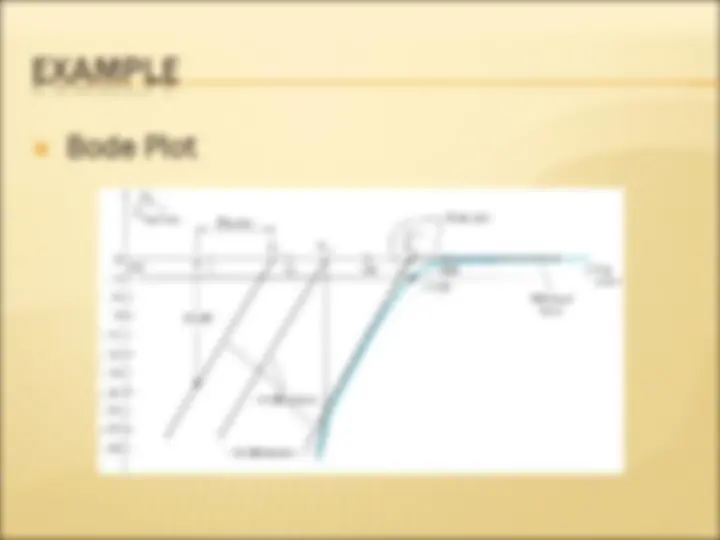
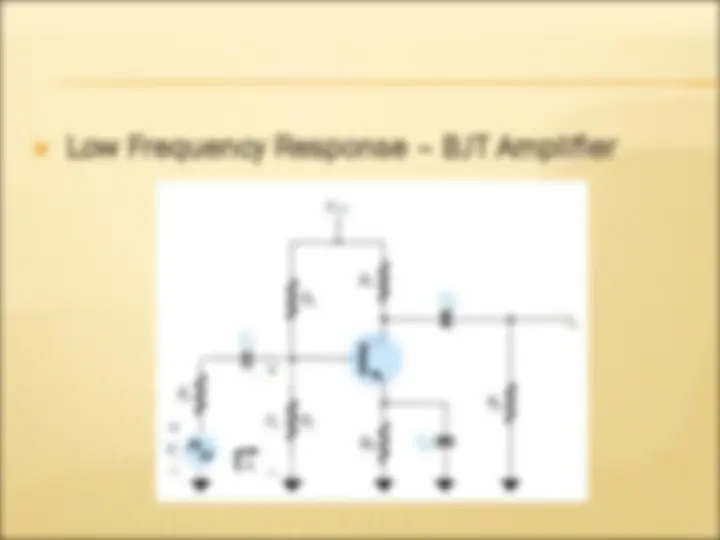
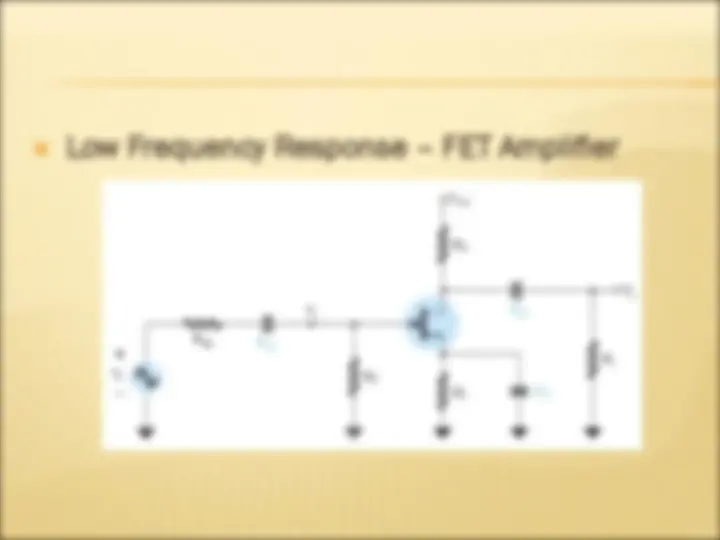
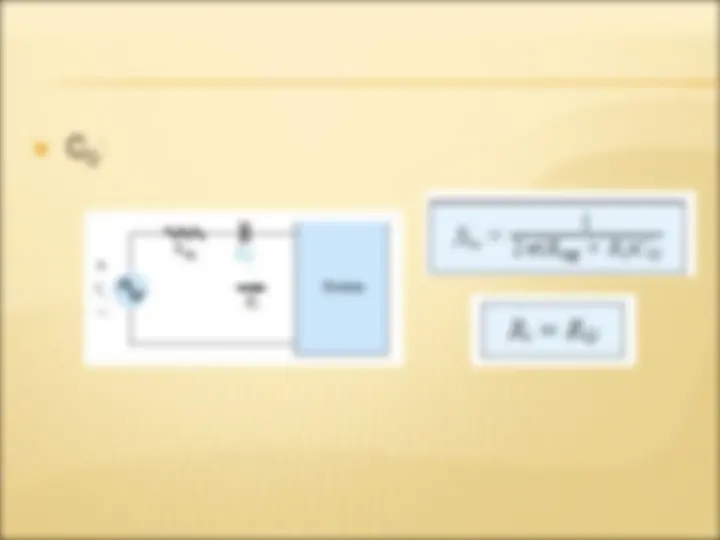
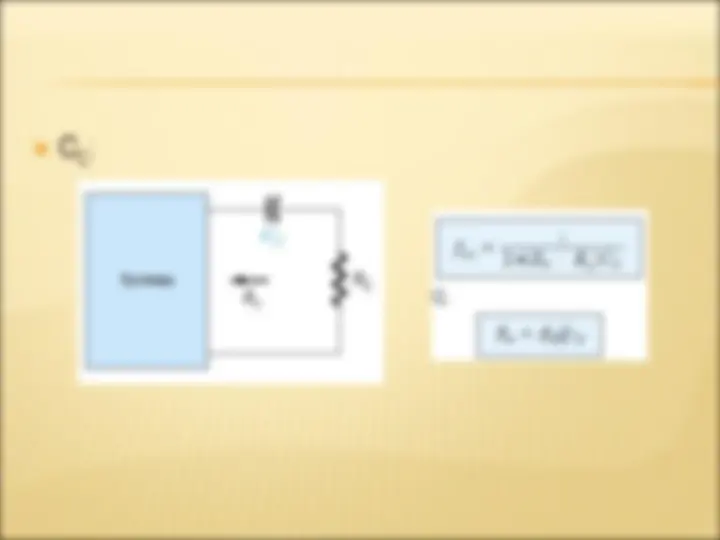
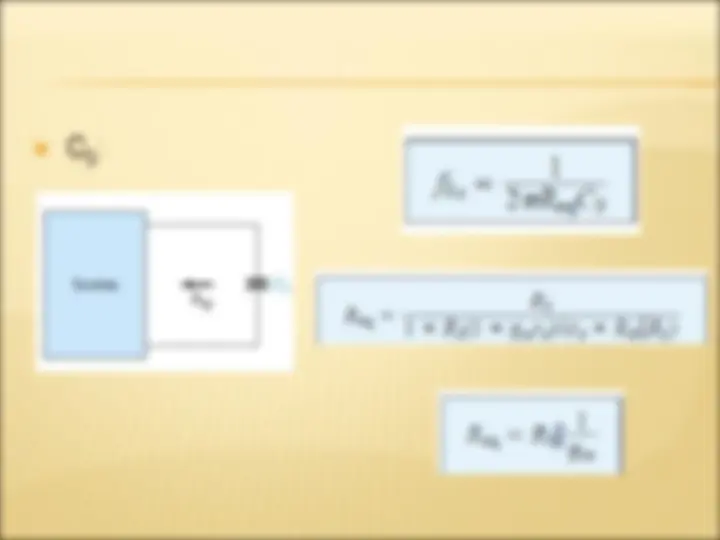
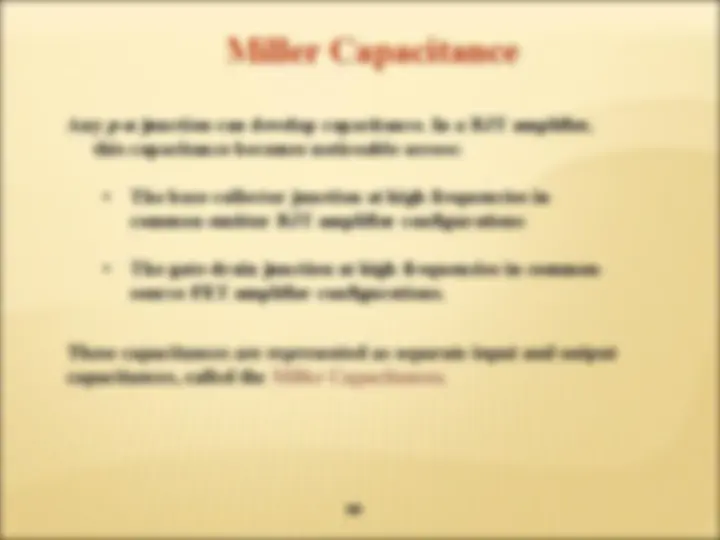
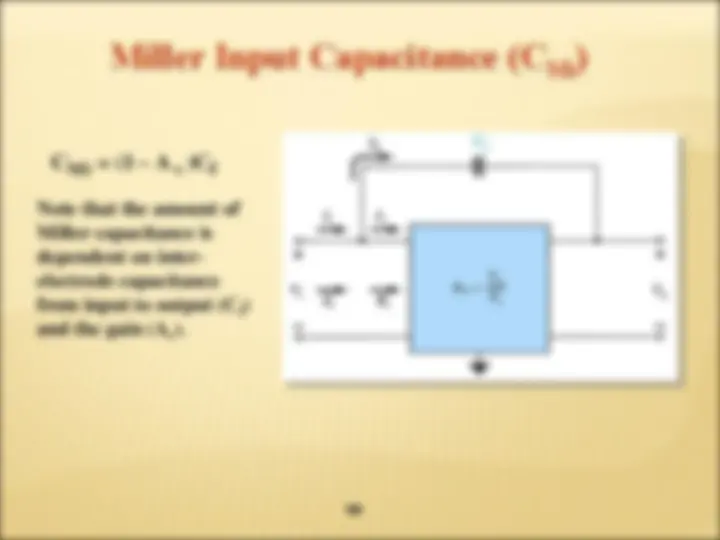
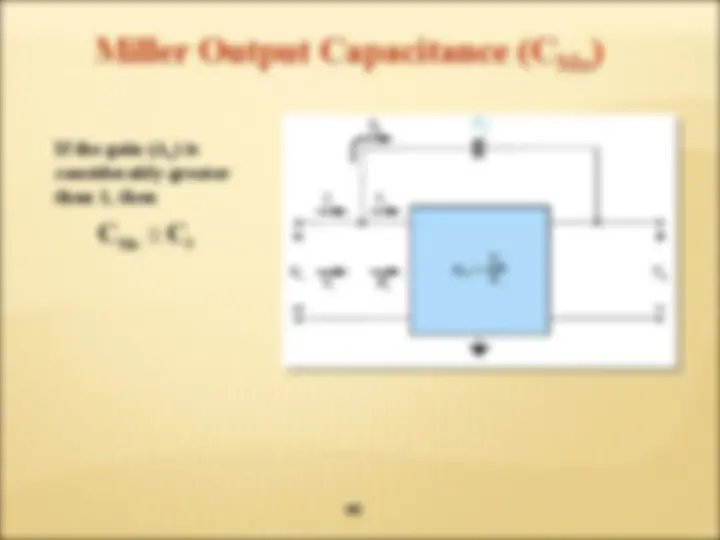
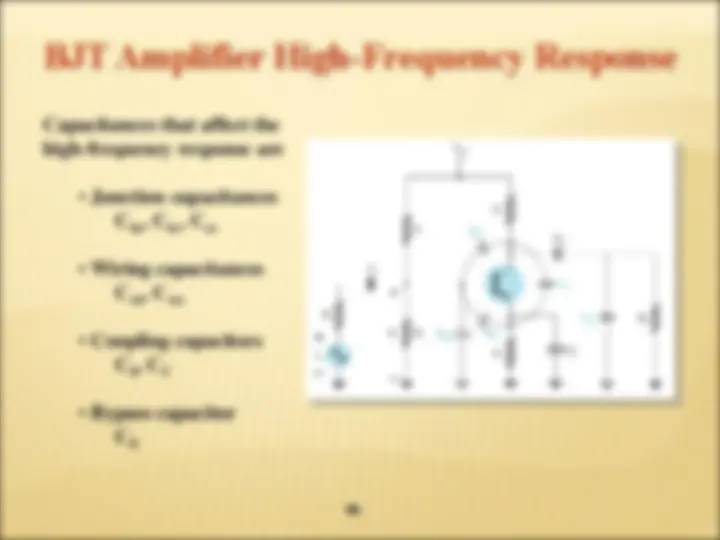

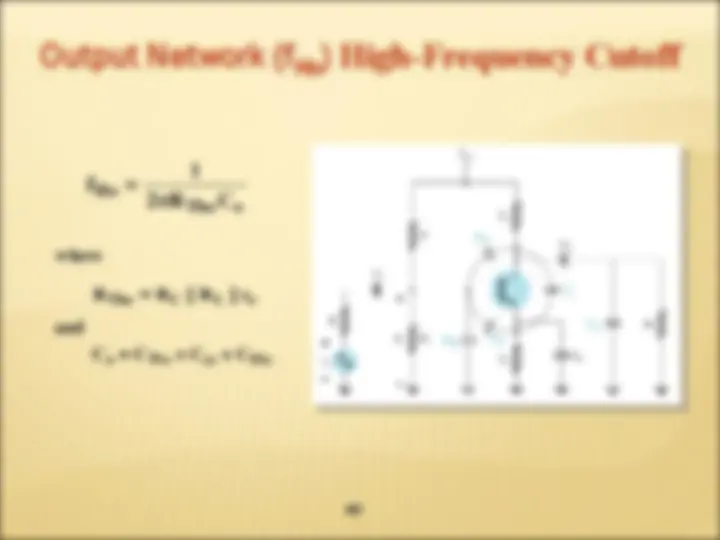
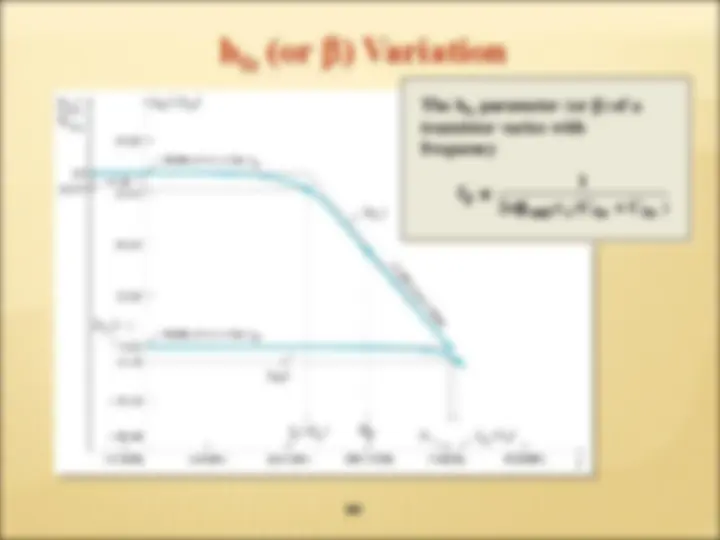
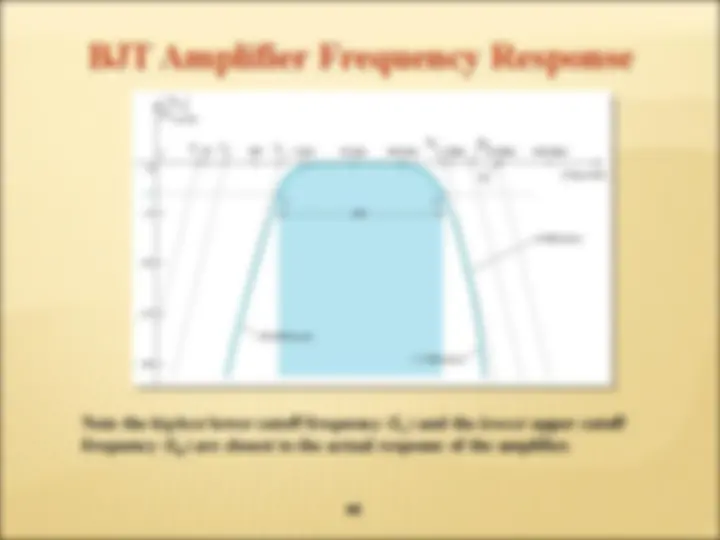
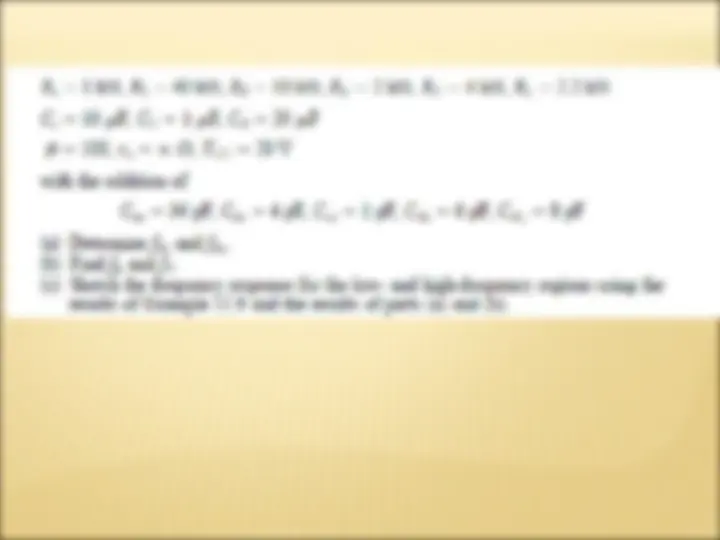
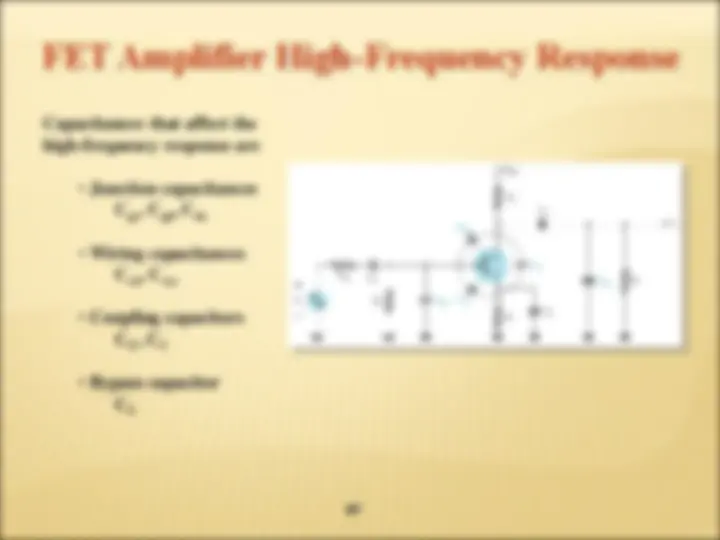
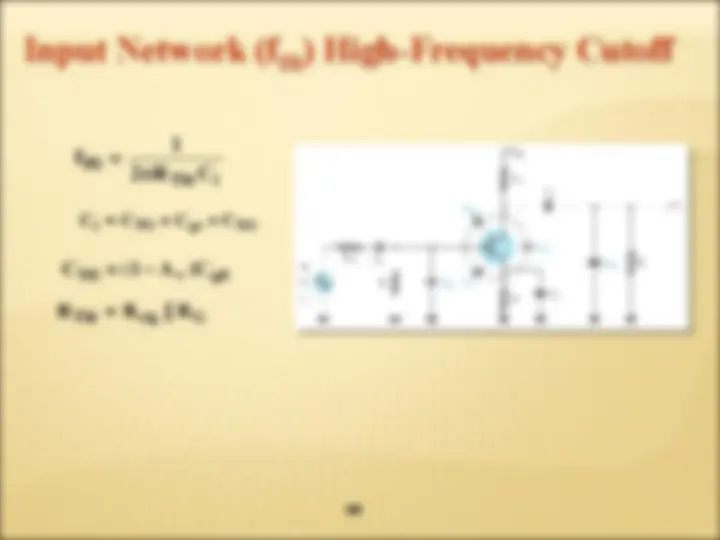
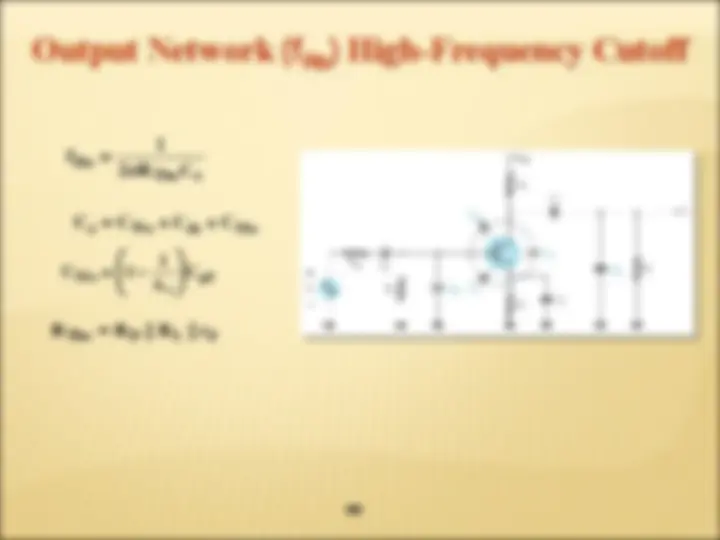
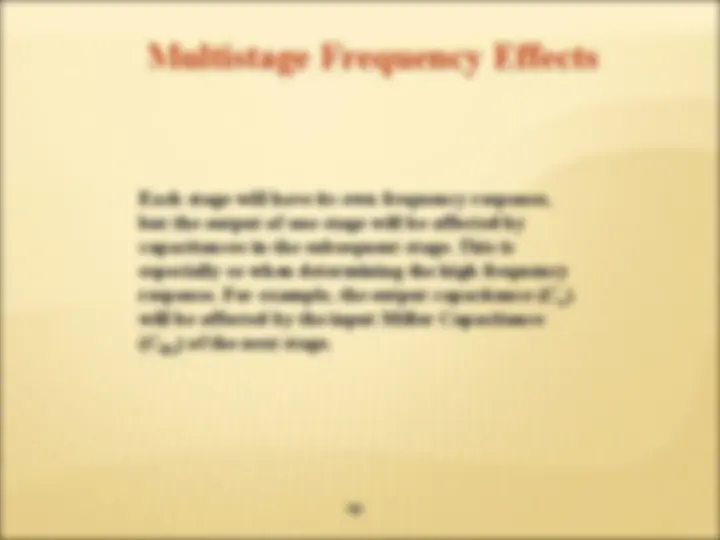
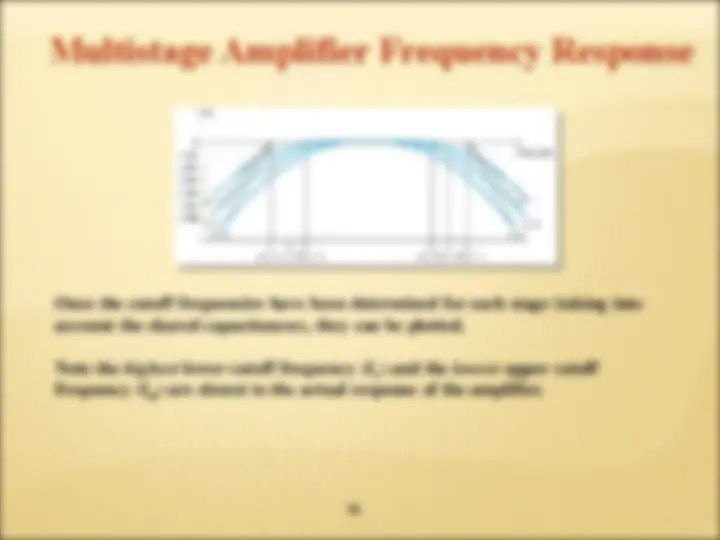
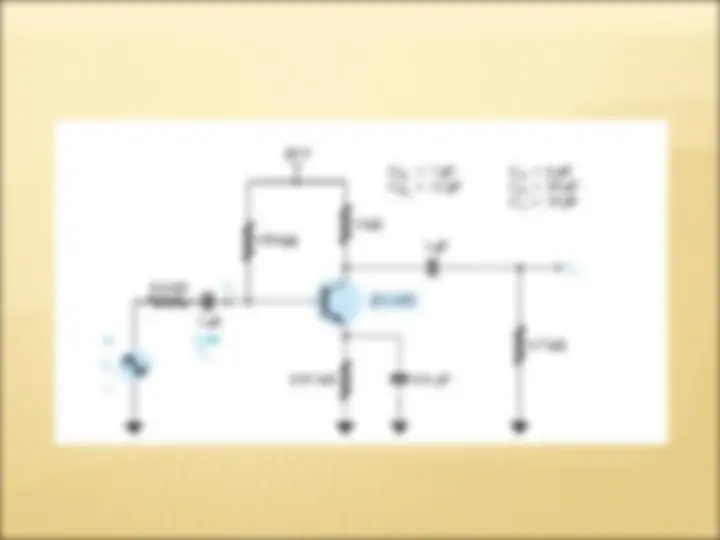
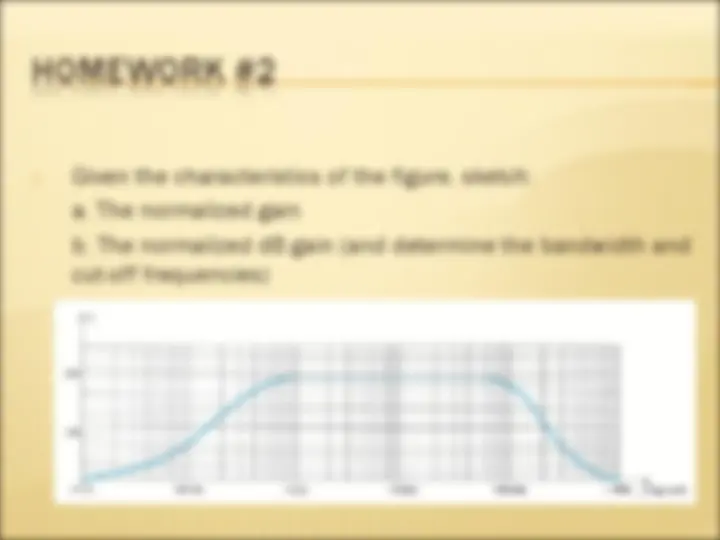
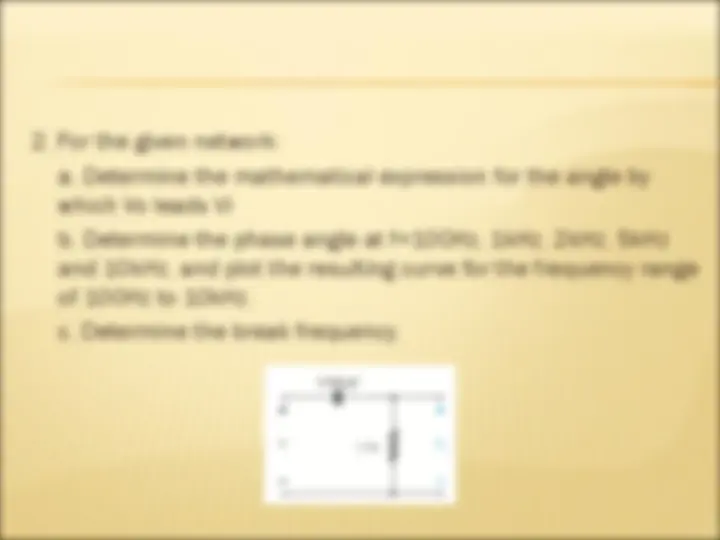
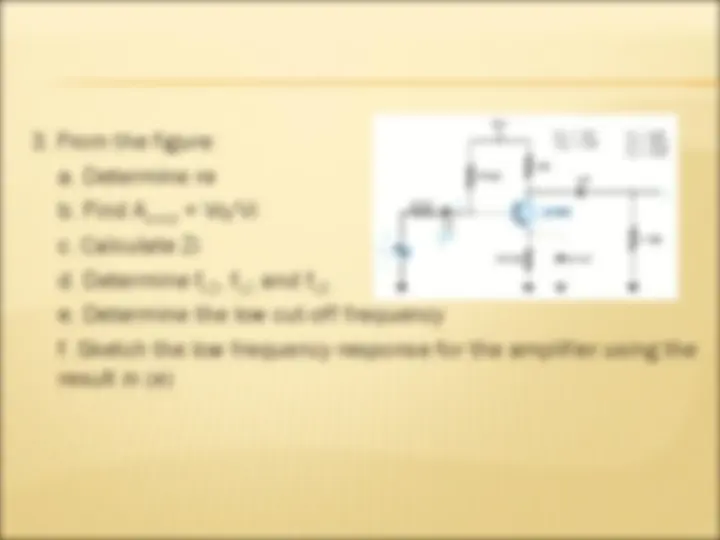
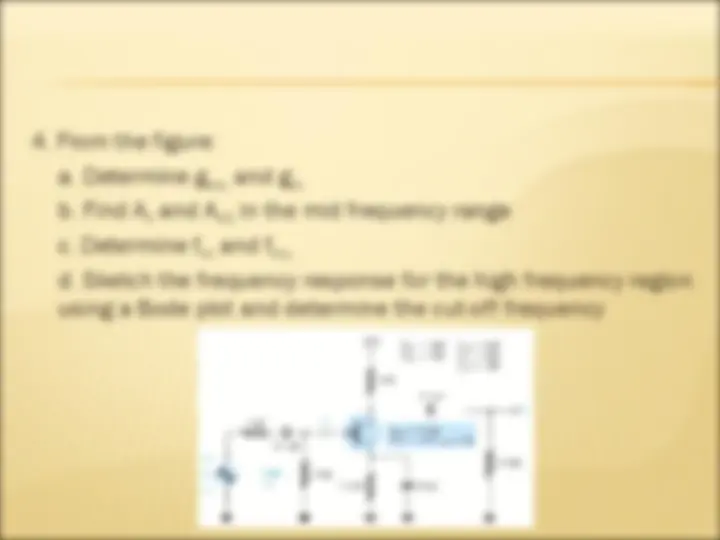



Study with the several resources on Docsity

Earn points by helping other students or get them with a premium plan


Prepare for your exams
Study with the several resources on Docsity

Earn points to download
Earn points by helping other students or get them with a premium plan
Community
Ask the community for help and clear up your study doubts
Discover the best universities in your country according to Docsity users
Free resources
Download our free guides on studying techniques, anxiety management strategies, and thesis advice from Docsity tutors
Lesson 3 of Electronic Circuits
Typology: Lecture notes
Uploaded on 11/28/2020
5
(1)4 documents
1 / 77

This page cannot be seen from the preview
Don't miss anything!






































































AC Amplifiers – the voltage gain decreases when the input frequency is too low or too high DC Amplifiers – have voltage gain all the way down to zero frequency Decibels – used to describe the decrease in voltage gain Bode Plot – used to graph the response of an amplifier
Middle Range of Frequencies – voltage gain is maximum / normal operation Low Frequencies – voltage gain decreases because the coupling and bypass capacitors no longer act like short circuits High Frequencies – voltage gain decreases due to the internal capacitances across a transistor junctions and due to stray-wiring capacitance
Cut-off Frequencies – the frequencies at which the voltage gain equals 0.707 of its maximum values f 1 and f 2
Outside the Mid-band Dominant Capacitor – one that is more important than all others in determining the cut-off frequency
Midband: Below Midband: Above Midband:
two important characteristics - A V(mid) and f 2 dc amplifier – more widely used than the ac amplifier because most amplifiers are now designed with op-amps instead of with discrete transistors
Between Midband and Cut-off
Example: The figure shows a 741C, an op-amp with a midband voltage gain of 100,000. If f 2 =10Hz, what does the frequency response look like?
Decibels – a useful method for describing frequency response Review of Logarithms x = 10 y y = log 10 x = log x
Two Useful Properties of Decibel Power Gain: Each time the ordinary power gain increases (decreases) by a factor of 2, the decibel power gain increases (decreases) by 3dB. Each time the ordinary power gain increases (decreases) by a factor of 10, the decibel power gain increases (decreases) by 10 dB. Examples: Calculate the decibel power gain for the following values: Ap = 1, 2, 4, and 8 A p = 1, 0.5, 0.25, and 0. Ap = 1, 10, 100, 1nd 1000 Ap = 1, 0.1, 0.01, and 0.
Voltage Gain – the output voltage divided by the input voltage A V = v out / v in Decibel Voltage Gain A V(dB) = 20 log A V example: What is the decibel voltage gain if AV=100,000; 100; 100,000, Basic Rules for Voltage Gain: Each time the voltage gain increases(decreases) by a factor of 2, the decibel voltage gain increases(decreases) by 6dB. Each time the voltage gain increases(decreases) by a factor of 10, the decibel voltage gain increases(decreases) by 20 dB.
Decibel Voltage Gain A V(dB) = 20 log A V = 20 log (A V ) (A V ) = 20 log A V
Concept of Impedance Matching